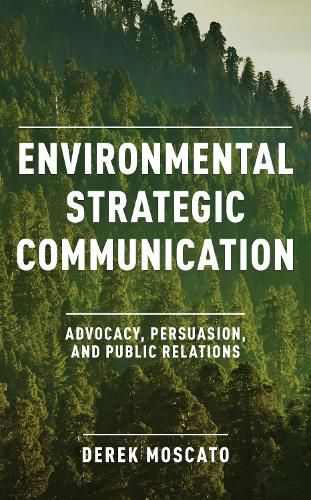Readings Newsletter
Become a Readings Member to make your shopping experience even easier.
Sign in or sign up for free!
You’re not far away from qualifying for FREE standard shipping within Australia
You’ve qualified for FREE standard shipping within Australia
The cart is loading…






A growing focus on environmentalism among government agencies, corporations, non-profits and the general public has necessitated a turn to the practice of environmental advocacy in all of its forms, including public relations practice, persuasive messaging, and social marketing. As scientists, public policy experts, and NGOs seek influence on issues of climate change, wildlife conservation, air pollution, and the health of oceans, they are turning to professional communication practices in order to best engage with publics and policymakers.
Environmental Advocacy and Public Relations provides students with both a theoretical understanding of environmental public relations and the tools with which to apply this knowledge. This includes hard skills such as a green op-ed writing, eco feature writing, publicity tactics including news releases, the art of interviewing for television and video, and social media acumen.
This text meets a growing needs for understanding environmentalism within media and communication. Unlike standard public relations texts, Environmental Advocacy and Public Relations integrates theories from environmentalism and ecology. It also recognizes the uniqueness of media tactics designed for green policy debates and social marketing. Finally, it emphasizes the agency of activist organizations like Greenpeace and the Sierra Club, which are central players in policy debates and warrant larger billing than they are often afforded in traditional PR and strategic communication textbooks.
Pedagogical features
Case studies Key concepts/terms Discussion questions Tactical PR activities and examples Experiential activities (opportunities for students to engage with the natural world in their own communities to better understand the issues they are studying. For example, a visit to a waterfront revitalization, an urban planning site, or an industrial clean-up area.)
$9.00 standard shipping within Australia
FREE standard shipping within Australia for orders over $100.00
Express & International shipping calculated at checkout
A growing focus on environmentalism among government agencies, corporations, non-profits and the general public has necessitated a turn to the practice of environmental advocacy in all of its forms, including public relations practice, persuasive messaging, and social marketing. As scientists, public policy experts, and NGOs seek influence on issues of climate change, wildlife conservation, air pollution, and the health of oceans, they are turning to professional communication practices in order to best engage with publics and policymakers.
Environmental Advocacy and Public Relations provides students with both a theoretical understanding of environmental public relations and the tools with which to apply this knowledge. This includes hard skills such as a green op-ed writing, eco feature writing, publicity tactics including news releases, the art of interviewing for television and video, and social media acumen.
This text meets a growing needs for understanding environmentalism within media and communication. Unlike standard public relations texts, Environmental Advocacy and Public Relations integrates theories from environmentalism and ecology. It also recognizes the uniqueness of media tactics designed for green policy debates and social marketing. Finally, it emphasizes the agency of activist organizations like Greenpeace and the Sierra Club, which are central players in policy debates and warrant larger billing than they are often afforded in traditional PR and strategic communication textbooks.
Pedagogical features
Case studies Key concepts/terms Discussion questions Tactical PR activities and examples Experiential activities (opportunities for students to engage with the natural world in their own communities to better understand the issues they are studying. For example, a visit to a waterfront revitalization, an urban planning site, or an industrial clean-up area.)